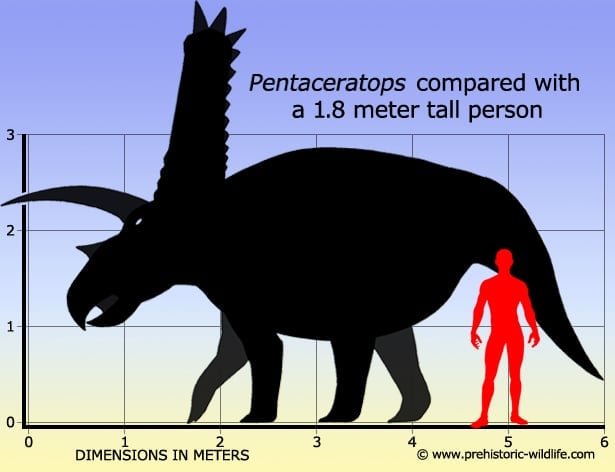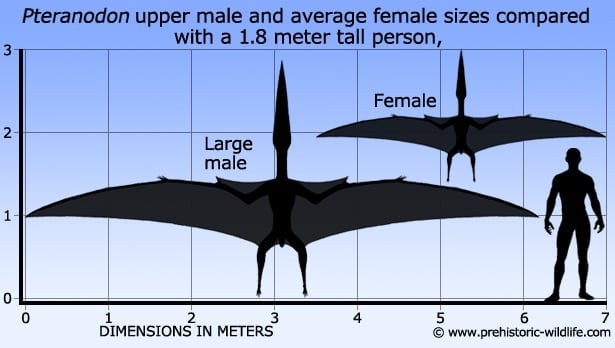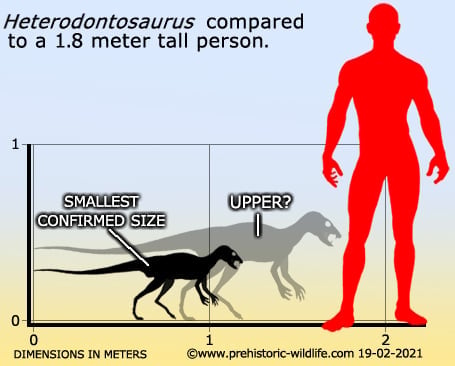|
|
Post by Joey12 on May 31, 2021 7:21:07 GMT
I'm about the size of it's leg.
|
|
|
|
Post by Talira Greycrest on May 31, 2021 8:56:14 GMT
Iguanodon's best-known feature was its spiked thumb which was originally thought to be a nose horn. Its been suggested that this pointy appendage was used as a weapon against predators.
|
|
|
|
Post by Talira Greycrest on May 31, 2021 13:41:20 GMT
Here's a very large Ceratopsian: Name: PentaceratopsPronunciation: Pen-tah-seh-rah-topsMeaning of name: "Five horned face" (palaeontologists mistook its pointed cheek bones for an extra pair of horns).Species: P. sternbergiiSize: Between 6 and 7 metres long, 3 metres high and weighing between 4 and 5 metric tonnes.Family: Chasmosaurinae (a sub-family of Ceratopsidae).Diet: Herbivore. Fed on low-growing vegetation.First fossils found: Known from several specimens, the first of which were discovered by American palaeontologist, Charles Hazelius Sternberg in the Fruitland Formation of New Mexico, in 1921. Named by American palaeontologist, Henry Fairfield Osborn, in 1923.Lived: 76 to 73 million years ago during the Campanian stage of the Late Cretaceous in what is now the southwestern United States.
 |
|
Tix Mascot
Tech guru
Italy is my second homeland
Posts: 11,071  Mini-Profile Background: {"image":"http://4.bp.blogspot.com/-X5mhw13BJ7Y/TwKeZ3uM7YI/AAAAAAAABPw/D82go4Ny_8E/s1600/italy-background-8-787281.jpg","color":""}
Mini-Profile Text Color: 0ef8f1
Mini-Profile Name Color: f40d39
Year of Birth: 1961
Nationality: Norwegian
Mini-Profile Background: {"image":"http://4.bp.blogspot.com/-X5mhw13BJ7Y/TwKeZ3uM7YI/AAAAAAAABPw/D82go4Ny_8E/s1600/italy-background-8-787281.jpg","color":""}
Mini-Profile Text Color: 0ef8f1
Mini-Profile Name Color: f40d39
Year of Birth: 1961
Nationality: Norwegian
|
Post by Tix Mascot on May 31, 2021 20:25:59 GMT
Did it have any contemporary predators to be scared of and were the horns for defence?
|
|
|
|
Post by Talira Greycrest on Jun 1, 2021 1:29:30 GMT
Did it have any contemporary predators to be scared of and were the horns for defence? It's been suggested that the horns and neck shield were primarily for display, however, since they're also quite tough and heavy, it's also possible they were used for protection against predators such as Albertosaurus. |
|
|
|
Post by Talira Greycrest on Jun 1, 2021 5:39:15 GMT
Contrary to popular belief, this animal isn't a dinosaur, but a flying reptile known as a Pterosaur: Name: PteranodonPronunciation: Teh-ran-oh-don.Meaning of name: "Winged and toothless".Species: P. longiceps, though it's possible there may be a second species.Wingspan: Males had an estimated wingspan of between 5 and 7 metres. The wingspan for females is estimated to have measured between 3 and 4 metres. Weight estimated between 20 and 90kgs.Family: Pteranodontidae.Diet: Piscivore.First fossils found: Known from dozens of specimens, most of which are partial skeletons. First discovered by American palaeontologist, Othniel Charles Marsh, in the Niobrara Chalk Formation of western Kansas, in 1870. Named by Mr. Marsh in 1876. A distinguishing feature of this Pterosaur was the crest on its head, which was probably used for display.Lived: 89.8 to 72.1 million years ago from the Coniacian stage through to the Campanian stage of the Late Cretaceous in what is now the midwestern, southeastern and western United States. 'Jurassic Park 3' Pteranodon scene |
|
|
|
Post by Joey12 on Jun 1, 2021 7:37:11 GMT
Pentaceratops - wow that thing is huge.
Pteranodon - too big to sit on my shoulder like my parrot does.
|
|
|
|
Post by Talira Greycrest on Jun 1, 2021 9:55:07 GMT
Pteranodon was once thought to be the largest Pterosaur until the discoveries of Quetzalcoatlus in 1971 and Hatzegopteryx in 2002, both of which wingspans of between ten and twelve metres.
|
|
|
|
Post by "ROCK" the flamin'cowboy on Jun 1, 2021 11:15:20 GMT
Wow that's big.
|
|
|
|
Post by Talira Greycrest on Jun 1, 2021 13:26:15 GMT
When first discovered, it was thought that Quetzalcoatlus had a wingspan of fifteen metres, but further studies have reduced the wingspan to eleven metres, more than three times wider than the wingspan of today's Wandering Albatross. |
|
|
|
Post by Talira Greycrest on Jun 2, 2021 1:33:58 GMT
This animal isn't a dino, but rather a very large marine reptile with an incredibly long neck: Name: ElasmosaurusPronunciation: Ee-lazz-mo-sore-us.Meaning of name: "Thin plate lizard".Species: E. platyurusSize: Estimated to have measured around 14 metres long and weighed 2.5 metric tonnes.Family: Elasmosauridae.Diet: Piscivore.First fossils found: Known only from a single, partial skeleton discovered by American army surgeon, Theophilus Hunt Turner, in the Pierre Shale Formation of Kansas in 1867. Named by American palaeontologist, Edward Drinker Cope, in 1868. The most striking feature of this Plesiosaur is its neck, which measured half of the animal's total body length, and contained 72 vertebrae.Lived: 80 million years ago during the Campanian stage of the Late Cretaceous in the Western Interior Seaway, which once covered what is now the western and midwestern United States. |
|
|
|
Post by Joey12 on Jun 2, 2021 6:15:41 GMT
Looks like a long necked seal.
|
|
|
|
Post by Talira Greycrest on Jun 2, 2021 7:27:31 GMT
Mr. Cope originally reconstructed the skeleton with the skull on the end of the tail. Fellow palaeontologist, Othniel Charles Marsh, very quickly pointed out the mistake, which led to the two palaeontologists becoming fierce rivals. Between them, they discovered and named 136 dinosaur species (Marsh named 80, Cope named 56).
|
|
|
|
Post by Joey12 on Jun 2, 2021 7:50:30 GMT
Oops, head at the wrong end !!!
|
|
|
|
Post by Talira Greycrest on Jun 2, 2021 9:59:25 GMT
Here's a tiny dino with a big name: Name: HeterodontosaurusPronunciation: Het-er-o-dont-o-sore-us.Meaning of name: "Different-toothed lizard", because it had three different kinds of teeth.Species: H. tuckiSize: 90cm long, 50cm tall and weighed between 2 and 10kgsFamily: Heterodontosauridae.Diet: Herbivore. Fed on low-growing vegetation.First fossils found: Known from several specimens, the first of which was discovered by a British-South African expedition to South Africa during the early 1960's. Named by English palaeontologist, Alan Jack Charig and South African palaeontologist, Alfred Walter Crompton, in 1962. Most dinosaurs only have one type of tooth, but Heterodontosaurus had three: incisor-like teeth at the front of the jaws, a pair of tusks in the middle and grinding cheek-teeth at the back.Lived: 200 to 190 million years ago from the Hettangian stage through to the Pliensbachian stage of the Early Jurassic in what is now South Africa. |
|